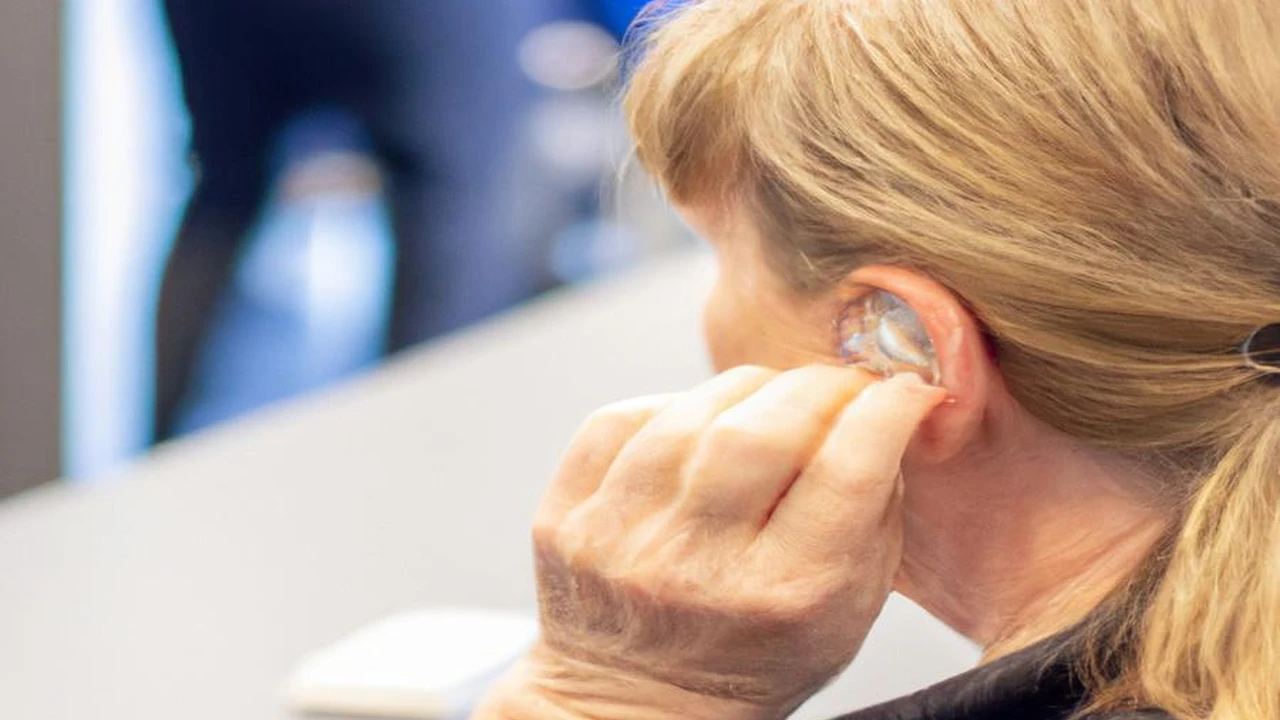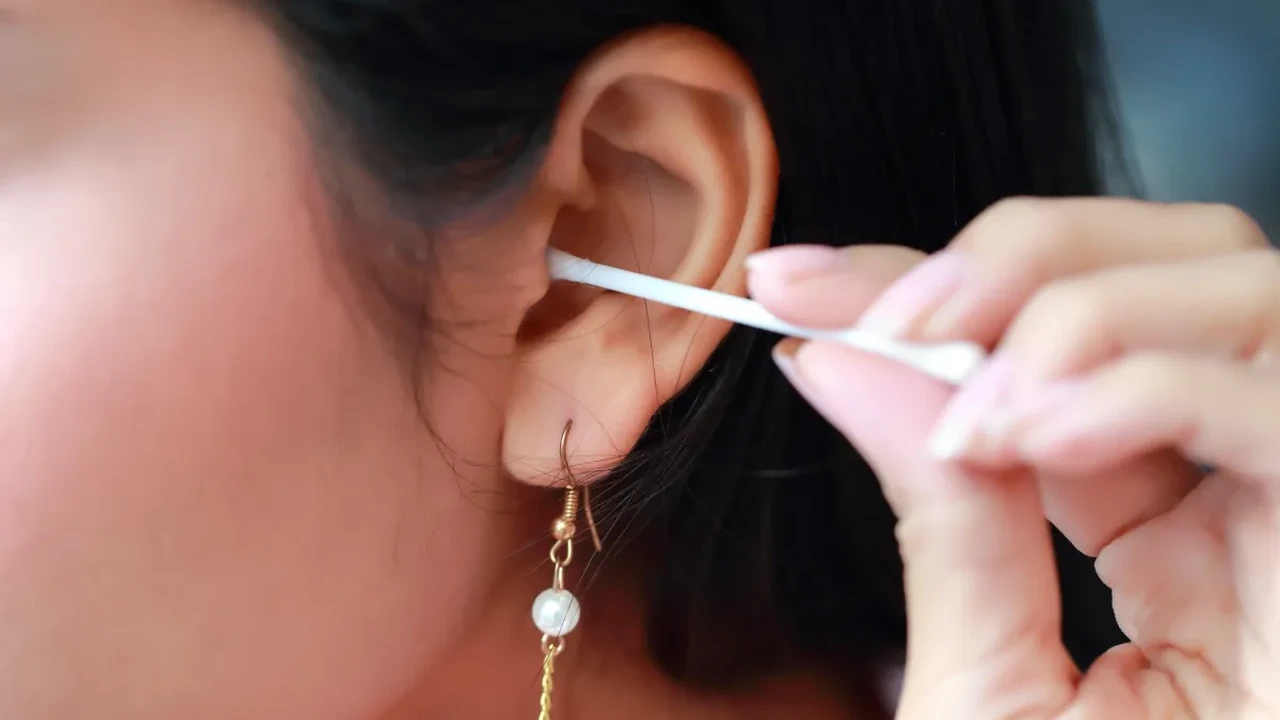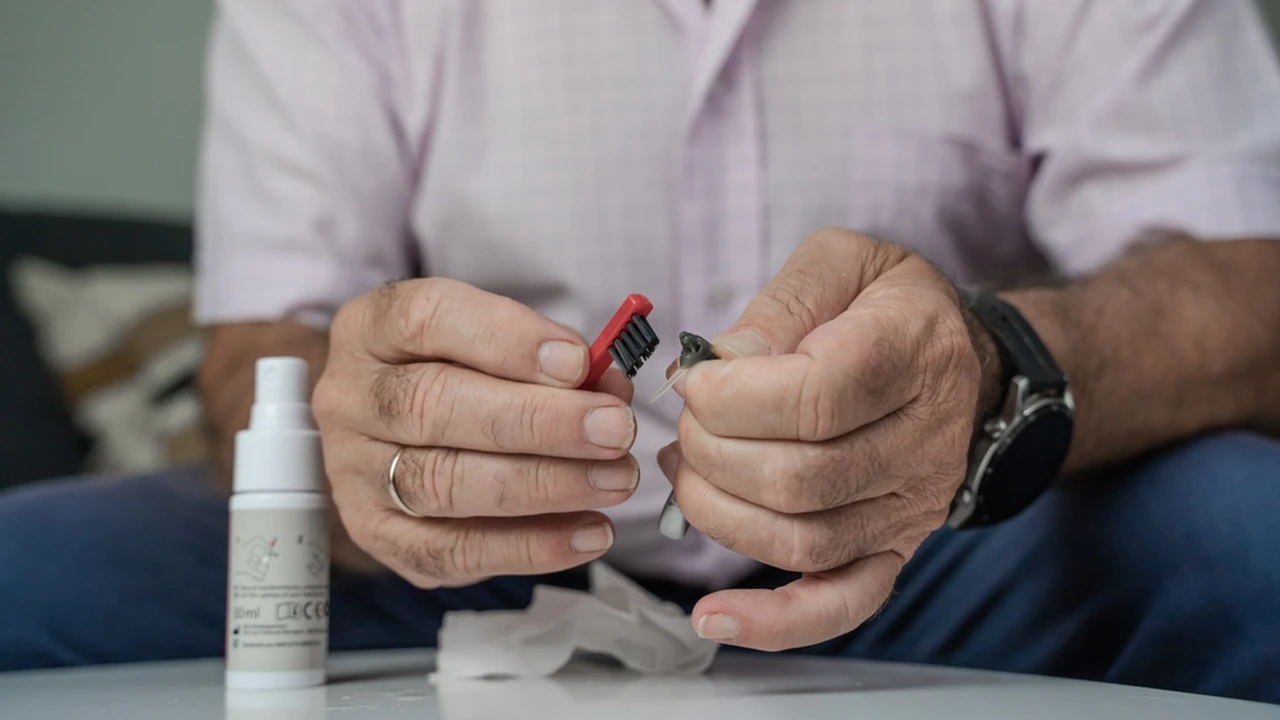Financing Options For Hearing Aids Explained
Explore various financing options for hearing aids, including payment plans, credit options, and government assistance programs to make them affordable.

Financing Options For Hearing Aids Explained
Explore various financing options for hearing aids, including payment plans, credit options, and government assistance programs to make them affordable. Let's face it, hearing aids can be a significant investment. For many, the sticker shock can be a real barrier to getting the help they need. But here's the good news: there are numerous ways to make hearing aids more affordable. You don't have to let the cost prevent you from experiencing the joy of clear sound again. This comprehensive guide will walk you through various financing options, from payment plans and credit options to government assistance and even some lesser-known avenues. We'll also dive into specific product recommendations and comparisons to help you make an informed decision.
Understanding Hearing Aid Costs and Why Financing Matters
Before we delve into financing, it's crucial to understand why hearing aids can be expensive. The price tag often reflects advanced technology, custom fitting, professional services (like audiological evaluations and follow-up adjustments), and ongoing support. These aren't just simple amplifiers; they're sophisticated medical devices tailored to your unique hearing loss. Because of this, the average cost for a pair of digital hearing aids can range from $2,000 to $7,000, or even more for premium models with cutting-edge features. This is where exploring financing options becomes essential. It allows you to spread out the cost, making it manageable within your budget, and ensures you don't compromise on the quality of care you receive.
Payment Plans and Manufacturer Programs for Hearing Aids
Many hearing aid clinics and manufacturers understand the financial burden and offer flexible payment plans. These can be a great way to break down the total cost into smaller, more manageable monthly installments. Often, these plans come with low or even 0% interest for a promotional period, especially if you have good credit. It's always worth asking your audiologist or hearing aid provider about their in-house payment options. They might partner with third-party financing companies specializing in healthcare, such as CareCredit or Allegro Credit, which offer various plans with different interest rates and repayment terms. For example, CareCredit often provides promotional financing options for 6, 12, 18, or 24 months with no interest if paid in full by the end of the promotional period. Always read the fine print to understand the terms and conditions, especially regarding deferred interest.
Credit Options and Personal Loans for Hearing Aid Purchases
If in-house payment plans aren't suitable, or if you prefer more traditional lending, personal loans or lines of credit can be viable options. Banks and credit unions offer personal loans that can be used for any purpose, including medical expenses. The interest rates on these loans will depend on your credit score and the lender. While they might have higher interest rates than some promotional financing, they offer predictable monthly payments and a fixed repayment schedule. Another option is using a low-interest credit card, especially if you can find one with an introductory 0% APR period. Just be mindful of the interest rates after the promotional period ends, as they can be quite high. Always compare interest rates and fees from multiple lenders to find the best deal.
Government Assistance Programs for Hearing Aid Affordability
Several government programs can help reduce the cost of hearing aids, particularly for specific demographics or those with limited income. These programs vary by country and even by state or region, so it's crucial to research what's available where you live.
Medicare and Medicaid Coverage for Hearing Aids
In the United States, original Medicare (Parts A and B) generally does not cover hearing aids or routine hearing exams. However, some Medicare Advantage (Part C) plans do offer benefits for hearing aids, often through a network of providers and with specific allowances. It's essential to check with your specific Medicare Advantage plan to understand their coverage. Medicaid, on the other hand, often provides more comprehensive coverage for hearing aids, especially for children and sometimes for adults, depending on the state. Eligibility for Medicaid is typically based on income and family size.
Veterans Affairs VA Benefits for Hearing Aids
For eligible veterans in the U.S., the Department of Veterans Affairs (VA) is an excellent resource. The VA provides comprehensive hearing healthcare, including hearing exams, hearing aids, and related services, to veterans who meet specific criteria. This often includes veterans with service-connected hearing loss or those who meet certain income thresholds. If you're a veteran, contact your local VA medical center to inquire about your eligibility and the process for obtaining hearing aids.
State and Local Programs for Hearing Aid Support
Many states and local communities offer programs to assist residents with hearing aid costs. These can include grants, low-interest loans, or direct provision of hearing aids. For example, some states have programs for children with hearing loss, while others might have initiatives for low-income adults. Organizations like the Hearing Loss Association of America (HLAA) or your state's Department of Health can often provide information on these local resources.
Non-Profit Organizations and Foundations for Hearing Aid Grants
Numerous non-profit organizations and foundations are dedicated to helping individuals with hearing loss access affordable hearing aids. These organizations often provide grants, refurbished devices, or connect individuals with discounted services. Some prominent examples include:
- HearAid Foundation: Provides financial assistance for hearing aids to those in need.
- Help The Children Hear: Focuses on providing hearing aids to children from low-income families.
- Lions Clubs International: Many local Lions Clubs have programs to collect, refurbish, and distribute hearing aids to those who cannot afford them.
- Sertoma: Offers assistance programs and resources for individuals with hearing loss.
It's worth researching these and other local charities. A simple online search for 'hearing aid grants' or 'hearing aid assistance programs' in your area can yield valuable results.
Employer Benefits and Flexible Spending Accounts FSAs and Health Savings Accounts HSAs for Hearing Aids
Don't overlook your employer's benefits! Some employers offer health insurance plans that include hearing aid coverage. Check your benefits package carefully. Additionally, if you have a Flexible Spending Account (FSA) or a Health Savings Account (HSA), you can use these tax-advantaged accounts to pay for hearing aids and related expenses. Contributions to FSAs and HSAs are made with pre-tax dollars, effectively reducing the cost of your hearing aids by your tax bracket. HSAs, in particular, are great because the funds roll over year to year and can be invested, growing tax-free.
Over-the-Counter OTC Hearing Aids as a Cost-Effective Alternative
With the recent availability of Over-the-Counter (OTC) hearing aids, a new, often more affordable, option has emerged for adults with perceived mild to moderate hearing loss. These devices do not require a prescription or a professional fitting, making them more accessible and generally less expensive than traditional prescription hearing aids. While they might not offer the same level of customization or professional support, they can be a good starting point for some individuals.
Recommended OTC Hearing Aid Products and Comparisons
When considering OTC options, it's important to choose reputable brands. Here are a few examples, keeping in mind that the market is rapidly evolving:
- Jabra Enhance Plus: These are designed to look like earbuds and offer good sound quality for mild to moderate hearing loss. They connect to a smartphone app for personalization. They typically retail for around $799-$899 for a pair. They are great for active individuals who want a discreet option that doubles as headphones for streaming music and calls. Their main advantage is their earbud-like design and app-based customization.
- Lexie B2 Powered by Bose: These are a popular choice, offering a balance of features and affordability. They come with an app for self-tuning and offer good sound clarity. Prices usually range from $849-$999 for a pair. They are suitable for users who are comfortable with smartphone apps and want a reliable, self-adjustable device. Their key selling point is the Bose sound technology and user-friendly app.
- Sony CRE-C10: These are very discreet, nearly invisible in the ear, and designed for mild to moderate hearing loss. They focus on simplicity and ease of use. Expect to pay around $999-$1,299 for a pair. They are ideal for those prioritizing discretion and a straightforward user experience. Their small size is a significant advantage.
- Eargo 7: While a bit pricier for an OTC option, Eargo offers a unique, virtually invisible design and advanced features like Sound Adjust technology. They often come with remote support from hearing professionals. A pair can cost around $2,950. Eargo is for users who want maximum discretion and are willing to invest more for advanced features and some professional guidance within the OTC framework. Their 'invisible' design and included support are major draws.
Comparison Table (Illustrative, prices can vary):
| Product | Typical Price (Pair) | Key Features | Ideal User |
|---|---|---|---|
| Jabra Enhance Plus | $799-$899 | Earbud design, app control, music streaming | Active users, tech-savvy, mild-moderate loss |
| Lexie B2 Powered by Bose | $849-$999 | App-based self-tuning, Bose sound quality | Users comfortable with apps, mild-moderate loss |
| Sony CRE-C10 | $999-$1,299 | Very discreet, simple operation | Users prioritizing invisibility, mild-moderate loss |
| Eargo 7 | $2,950 | Virtually invisible, Sound Adjust, remote support | Users wanting maximum discretion & advanced tech, mild-moderate loss |
Remember, OTC hearing aids are not suitable for everyone, especially those with severe hearing loss or complex auditory needs. Always consult with a hearing care professional if you're unsure.
Refurbished and Used Hearing Aids as a Budget-Friendly Choice
Another way to save money is by considering refurbished or used hearing aids. Many reputable organizations and some clinics offer refurbished devices that have been professionally cleaned, repaired, and reprogrammed. These can be significantly cheaper than new models. However, it's crucial to purchase from a trusted source that offers a warranty and professional fitting services. Buying used hearing aids from unknown sellers can be risky, as you might not get the necessary support or a device that's truly suitable for your hearing loss. Always ensure the device can be reprogrammed to your specific audiogram.
Tips for Maximizing Affordability and Finding the Best Value in Hearing Aids
Beyond specific financing options, here are some general tips to help you get the best value for your hearing aid investment:
- Get a Comprehensive Hearing Evaluation: This is the first and most important step. A professional audiologist will accurately diagnose your hearing loss and recommend the most appropriate type of hearing aid. This prevents you from buying a device that isn't right for your needs.
- Shop Around and Compare: Don't settle for the first quote you receive. Get pricing from several different providers and compare not just the device cost, but also what's included in the package (e.g., follow-up appointments, warranty, batteries).
- Ask About Bundled Services: Some clinics bundle the cost of the hearing aids with professional services like fittings, adjustments, and a certain number of follow-up visits. Understand what's included and what might be an extra charge.
- Consider Technology Levels: Hearing aids come in various technology levels (basic, mid-range, premium). While premium models offer the most advanced features, a mid-range option might provide excellent performance for your needs at a lower cost. Discuss with your audiologist what features are truly essential for your lifestyle.
- Inquire About Discounts: Some providers offer discounts for seniors, veterans, or members of certain organizations. It never hurts to ask!
- Understand the Warranty and Trial Period: A good warranty protects your investment against defects and repairs. A trial period (often 30-60 days) allows you to test the hearing aids in your daily life and ensure they meet your expectations before committing fully.
Navigating the Path to Better Hearing with Financial Confidence
Getting hearing aids is a journey, and financial planning is a big part of it. By understanding the various financing options available – from flexible payment plans and credit solutions to government assistance and non-profit grants – you can make an informed decision that fits your budget. Don't let the initial cost deter you from improving your quality of life. With careful research and by leveraging the resources available, you can find an affordable path to better hearing. Remember, the investment in your hearing health is an investment in your overall well-being, communication, and connection with the world around you.
:max_bytes(150000):strip_icc()/277019-baked-pork-chops-with-cream-of-mushroom-soup-DDMFS-beauty-4x3-BG-7505-5762b731cf30447d9cbbbbbf387beafa.jpg)






